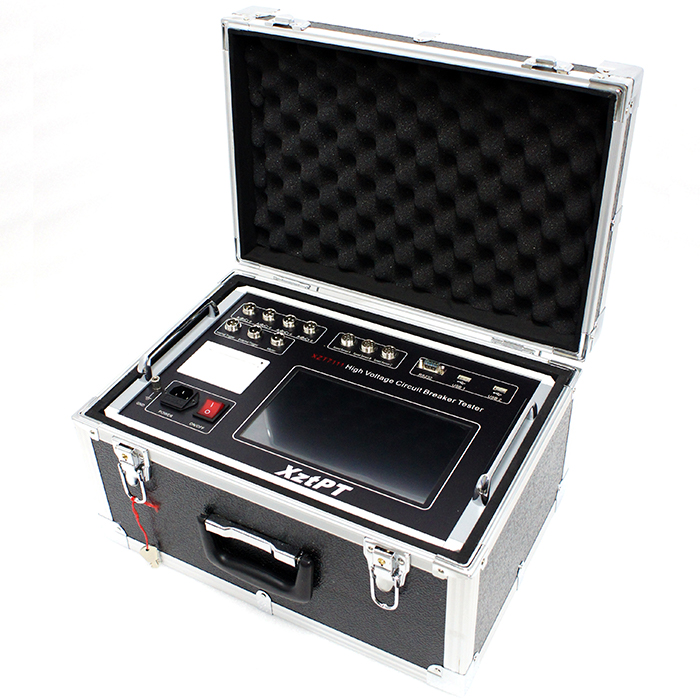1. Abnormal sound: The transformer emits a uniform and rhythmic "buzzing" sound during normal operation. If other abnormal sounds occur, it is abnormal sound. The main reasons are as follows:
① When a large-capacity power equipment is started, the load suddenly increases and the transformer sound also becomes louder.
② Overload. In summer or during busy farming periods, the distribution transformer will emit a high and heavy "buzzing" sound due to overload.
③ Some parts are loose, such as the core screws of the iron core are not clamped tightly, causing the iron core to become loose. At this time, the transformer emits strong and uneven "noise"
④ If there is poor internal contact or insulation breakdown, the transformer will make a "crackling" sound of discharge.
⑤ When the system is short-circuited or grounded, the short-circuit current passing through is very large, making the transformer very noisy. When the line is disconnected at the wire connection or T-junction, and the wind blows, it is easy to cause the contact to be connected and broken, resulting in arc light or sparks. At this time, the transformer will make a frog-like "chirp" sound when the voltage is low. When a grounding or short-circuit accident occurs in the line, the transformer will make a "booming" sound.
2. Abnormal oil temperature: Under normal load and normal cooling conditions, the oil temperature of the transformer continues to rise. The main reasons are: due to eddy current or damage to the insulation of the core screws used to clamp the core, which will increase the oil temperature of the transformer. In addition, partial inter-layer or inter-turn short circuit of the winding, internal contact failure, increased contact resistance, and large resistance short circuit on the secondary line will also increase the oil temperature.
3. Abnormal oil color and oil level: The oil color changes too much and carbon appears in the oil. During heavy-load operation in summer, the oil level will rise. If it exceeds the maximum temperature mark, the oil should be properly drained when the transformer leaks. If the leakage is serious, the oil level will drop. If it drops below the minimum mark, add more oil.
4. The high and low voltage bushings are seriously damaged and discharge occurs. The main reasons are:
① The casing is not tightly sealed, and the insulation is damaged due to water ingress.
② The capacitor core of the bushing is poorly manufactured and causes free discharge inside.
③ Serious scale accumulation on the casing, loss of surface enamel, or large fragments and cracks on the casing will cause casing flashover and explosion accidents.
5. The three-phase voltage is unbalanced. The main reasons are:
① The three-phase load is unbalanced, causing the neutral point to shift and making the three-phase voltage unbalanced.
② Ferromagnetic resonance occurs in the system, which will cause the three-phase voltage to be unbalanced
③ Internal inter-turn or inter-layer short circuit will also cause three-phase voltage imbalance.
6. Tap changer failure
The main faults of tap changer include: poor contact, burnt contacts, short circuit between contacts, discharge of contacts to ground, and "squeaking" discharge sound on the fuel tank. The main reasons for such failures are:
① The tap changer contact spring pressure is insufficient, the contact roller pressure is uneven, the contact surface is reduced, and the contacts are severely worn, causing the tap changer to burn out.
② The tap-changer has poor contact and cannot withstand the impact of short-circuit current and malfunctions.
③ Due to improper operation, the tap position is switched incorrectly, causing the switch to burn out.
④ The insulation distance between phases is not enough, or the performance of the insulation material is reduced, resulting in short circuit under the action of overvoltage.
⑤ The oil temperature is too high, and the tap changer has been immersed in oil above normal temperature for a long time, causing carbon film and grease to appear on the tap changer contacts, causing the contacts to heat up and damage the contacts.
7. Failure of the lead part: Failure of the lead part often causes wire burnout, terminal ignition, etc. The main reasons are: the connection between the leads and the terminals is loose, resulting in poor contact, poor welding of the heating soft copper sheets, and poor welding between the leads, resulting in overheating or open welding. If not handled in time, the transformer will not operate or the three-phase voltage will be inconsistent. balance and burn out electrical equipment.
8. Coil failure: The failure often manifests itself as: local inter-turn or inter-layer short circuit in the winding, resulting in unbalanced three-phase voltage, coil discharge to ground, etc. The main reasons are:
① The transformer is exposed to water and moisture, the oil quality deteriorates, and the insulation capacity decreases.
② Poor material quality, manufacturing, and maintenance processes may cause coil failure.
In short, due to electromagnetic vibration, mechanical wear, chemical effects, atmospheric corrosion, electrical corrosion, improper maintenance, and improper operation management, operating transformers will experience various abnormal operation phenomena and serious faults. Therefore, only by strengthening the inspection of all aspects of the transformer Only through proper operation and management can the transformer reach a healthy operating level.
XZT 7111 High Voltage Circuit Breaker Tester





